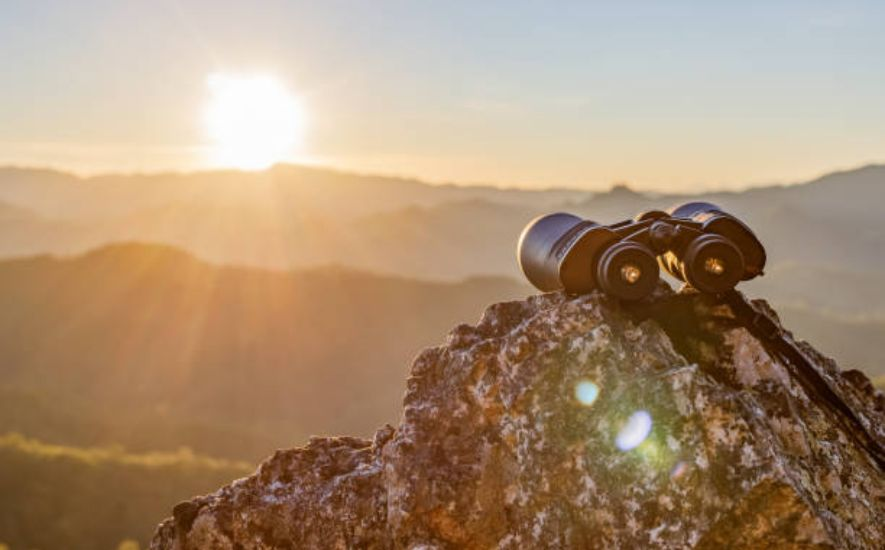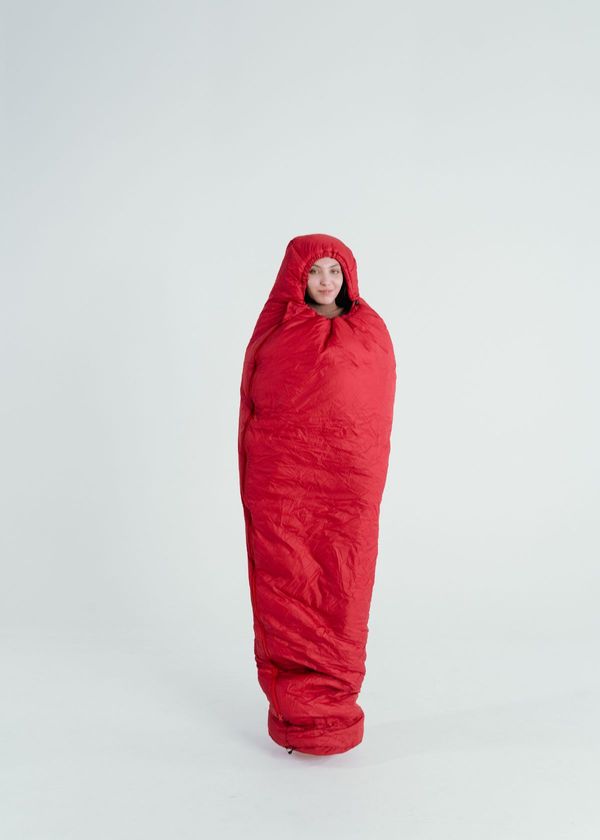Have you ever looked through a pair of binoculars and wondered what those numbers mean? You're not alone! Binoculars come in different sizes and with varying binocular specs; those numbers on the binoculars are not just random digits. They hold vital information about the optics of the binoculars.
The numbers on binoculars typically appear as two digits separated by an "x," for example, 8x42 or 10x50. The first number represents the binocular magnification or how much larger the object appears compared to the naked eye. The second number represents the larger objective lens diameter or the front lens size in millimeters.
Understanding what these numbers mean can significantly impact your binocular experience, whether you're using them for birdwatching, stargazing, or any other outdoor activity. Knowing which binoculars to choose can also help you avoid disappointment and get the best viewing experience possible.
So, let's dive deeper into what these numbers mean and how to choose the right binoculars for your needs.

Advanced Binocular Numbers and Features
Binoculars are essential for anyone who enjoys bird watching, hunting, or outdoor activities. While basic binoculars provide adequate functionality for many uses, advanced binoculars offer many features and specifications that can greatly enhance your viewing experience.

Magnification and Objective Lens Diameter
The magnification of a binocular refers to the degree to which the image is magnified. Advanced binoculars typically have a higher magnification than basic binoculars, allowing you to see further and more detail.
The objective lens diameter is the size of the front lens of the binocular, measured in millimeters. The larger the objective lens diameter, the more light enters the binocular, resulting in a brighter and clearer image.
Advanced binoculars often have larger objective lens diameters than basic binoculars, improving image quality in low-light conditions.
Field of View and Exit Pupil
The field of view is the width of the image you can see through the binoculars. Advanced binoculars typically have a wider field of view than basic binoculars, allowing you to see more of your surroundings.
The exit pupil is the size of the beam of how much light leaves the binoculars and enters your eye.
The larger the exit pupil, the brighter the image, particularly in low-light conditions. Advanced binoculars often have larger exit pupils than basic binoculars, resulting in a brighter and clearer image.
Prism Type and Coatings
The prism type refers to the type of prism used in the binoculars. Advanced binoculars often use a roof prism, which provides a more compact design and better image quality.
The coatings on the lenses also play a significant role in image quality. Advanced binoculars often use coatings that reduce glare and increase contrast, resulting in a clearer image.
Eye Relief and Diopter Adjustment
Eye relief refers to the distance between the eyepiece and your eye. Advanced binoculars often have more extended eye relief than basic binoculars, making them more comfortable, particularly for those wearing glasses.
The diopter adjustment is a feature that allows you to adjust the focus of each eyepiece independently, compensating for differences in vision between your eyes. Advanced binoculars often have a diopter adjustment, allowing you to fine-tune the focus for optimal image clarity.

How Binocular Numbers Impact Your Viewing Experience
Have you ever considered how the numbers associated with binoculars impact your viewing experience? From magnification to objective lens size, each number significantly determines the clarity and detail of the image you see.

Understanding Binocular Numbers
Binoculars are defined by two numbers: magnification and objective lens size. Magnification refers to how much closer an object appears compared to the naked eye, while objective lens size refers to the diameter of the front lenses of the binoculars.
For example, a binocular with the number "8x42" magnifies the object eight times and has an objective lens size of 42 millimeters.
The Science Behind Binocular Numbers
Magnification plays a significant role in determining how much detail you can see in an object. However, higher magnification does not always mean better image quality.
When magnification increases, the field of view is reduced, making it difficult to keep objects in focus. Higher magnification can also increase the amount of hand shake, making it harder to maintain a steady image.
Objective lens size determines the amount of light that enters the binoculars, which in turn affects the image's brightness.
A larger objective lens size means more light enters the binoculars, resulting in a brighter image. However, larger objective lens sizes also mean heavier and bulkier binoculars.
Real-World Applications of Binocular Numbers
Understanding binocular numbers can help you make an informed decision when purchasing a pair of binoculars.
For example, suppose you plan to use your binoculars for bird watching or other outdoor activities. In that case, you may opt for a lower magnification, such as 8x or 10x, to ensure a wider field of view and easier focusing.
On the other hand, if you plan to use your binoculars for stargazing, you may want to opt for a higher magnification to see more detail in the night sky.
Matching Binocular Numbers to Your Needs
The most critical factor to consider when purchasing binoculars is the number of specifications. The numbers associated with binoculars can be confusing and intimidating, but understanding them is crucial to finding the perfect match for your needs.

Magnification
The first number in a binocular specification is magnification. It refers to how many times the image is magnified. For example, a 10x magnification means the image appears ten times closer than reality.
Higher magnification is not always better since it can make the image shakier and more challenging to keep steady. A magnification of 8x or 10x is suitable for most activities, while a higher magnification of 12x or 15x may be suitable for astronomy.
Objective Lens Diameter
The second number in binocular specifications is the objective lens diameter, which is the size of the front lens in millimeters. A larger objective lens means bright light enters the binoculars, producing a brighter and clearer image.
However, a larger objective lens also means a heavier and bulkier pair of binoculars. A 30-40mm diameter is suitable for general use, while a diameter of 50mm or more is ideal for low-light conditions, such as stargazing.
Exit Pupil
The exit pupil is the size of the circle of light that is visible through the eyepiece. It is calculated by dividing the objective lens diameter by the magnification. For example, 10x42 binoculars have an exit pupil of 4.2 mm.
A larger exit pupil means a brighter image, but it is only useful in low-light conditions. In bright conditions, the human eye's pupil narrows, making a smaller exit pupil more effective. An exit pupil between 5mm-7mm is ideal for low-light conditions, while a pupil between 2mm-3mm is suitable for bright conditions.

Understanding Binocular Construction and Quality
Binoculars are one of the most popular optical devices for observing nature, sports events, and birdwatching. They are two telescopes that are mounted side by side and used to magnify distant objects with the help of prisms and lenses.
However, not all binoculars are created equal, and understanding their construction and quality is crucial for making an informed purchase decision.

Optical Components of Binoculars
The main components of binoculars are the objective lens, the eyepiece, and the prism system. The objective lens is located at the front of the binoculars and is responsible for collecting light and focusing it on the eyepiece.
On the other hand, the eyepiece magnifies the image formed by the objective lens and presents it to the viewer's eye. The prism system is located between the objective lens and the eyepiece and is responsible for inverting and rotating the image. Two types of prisms are commonly used in binoculars: Porro prisms and roof prisms.
Porro vs. Roof Prism Systems
Porro prisms are the traditional prism system used in binoculars. They consist of two right-angled prisms that reflect light back and forth between them, producing a bright and sharp image. Porro prism binoculars are more affordable than roof prism binoculars but are also bulkier and heavier.
On the other hand, roof prisms use a straight-through design that allows for a more compact and lightweight construction. However, this design can lose image brightness and sharpness, making them more expensive than Porro prism binoculars.
Factors Affecting Binocular Quality
Several factors, including magnification, objective lens diameter, lens coatings, and build quality, determine the quality of binoculars. Higher magnification may seem desirable but can also result in image shakiness and a smaller field of view.
A larger objective lens diameter allows more light to enter the binoculars, resulting in a brighter image. Lens coatings are also crucial as they reduce glare and increase light transmission, creating a clearer and sharper image. Finally, build quality is crucial for durability and comfort, with factors such as ergonomics and waterproofing playing a role.
Selecting the Right Binoculars
When selecting binoculars, it is important to consider the intended use and personal preferences. A lightweight and compact design may be more suitable for birdwatching or wildlife observation, while more extensive and rugged binoculars may be necessary for hunting or marine use.
Additionally, the objective lens and magnification size should be chosen based on the desired use, with higher magnification and larger objective lens diameters being more suitable for long-distance viewing.

Frequently Asked Questions (FAQs)
If you are looking for the best, top-rated binoculars for birding, hunting, or other outdoor activities, you might be confused by all the numbers, letters, and symbols on them.
The following are some frequently asked questions to understand the numbers on binoculars and what they mean:
Which are better, 12x50 or 10x42 binoculars?
The 12x50 binoculars have a higher magnification and larger objective lens diameter than the 10x42 binoculars. This means the 12x50 binoculars will provide a more detailed and brighter image due to the larger objective lens diameter. However, the higher magnification may also make it more difficult to hold the binoculars steady and can result in a narrower field of view.
The 10x42 binoculars, on the other hand, have a slightly lower magnification but a more compact and lighter design, making them easier to carry around. They also have a wider field of view compared to the 12x50 binoculars.
If you plan on using binoculars for birdwatching or wildlife observation, the 10x42 binoculars may be a better choice due to their wider field of view and more compact design. However, if you plan on using binoculars for astronomy or other applications with higher magnification, the 12x50 binoculars may be a better option.
Which are better, 10x50 or 20x50 binoculars?
If you want to use binoculars for stargazing or birdwatching, a 10x50 binocular may be a better option. The lower magnification of the 10x50 binoculars will provide a wider field of view, making it easier to locate objects in the sky or track birds in flight. The larger 50mm objective lenses will also allow more light to enter the binoculars, resulting in brighter, sharper images in low-light conditions.
On the other hand, if you want to use binoculars for more detailed observation, such as for wildlife observation or surveillance, the 20x50 binoculars may be a better option.
The higher magnification of the 20x50 binoculars will allow you to see objects in greater detail, but the narrower field of view may make it harder to locate objects quickly. Additionally, the higher magnification may make it more difficult to hold the binoculars steady without the use of a tripod.
What is the best number for binoculars?
The "best number" for binoculars refers to the magnification power of the lenses. Binoculars are typically described by two numbers, for example, "8x42" or "10x50". The first number indicates the magnification power, and the second refers to the size of the objective lenses in millimeters.
There is no one "best number" for binoculars, as the choice of magnification depends on the intended use of the binoculars. Here are some general guidelines to consider when selecting binoculars:
- For general-purpose use, such as bird watching or hiking, a magnification of 8x or 10x is usually sufficient. A higher magnification may result in a narrower field of view, making locating and tracking moving objects more difficult.
- A magnification of 10x or higher may be preferred for astronomy or other long-range viewings.
A lower magnification, such as 6x or 7x, may be more appropriate for compact binoculars that are easy to carry around.
How far can 12x50 binoculars see?
The distance that 12x50 binoculars can see depends on various factors, such as the atmospheric conditions, the size of the target, and the amount of available light.
In general, 12x50 binoculars have a magnification power of 12x and a 50mm objective lens diameter. The larger objective lens diameter allows for more light to enter the binoculars, making images appear brighter and clearer, particularly in low-light conditions.
Assuming average atmospheric conditions and a target of reasonable size, 12x50 binoculars can typically see objects that are several hundred yards away (around 300-500 yards / 274 - 457 m). However, this can vary depending on the specifics of the situation.
Conclusion
In conclusion, understanding what the numbers on binoculars mean is essential for any outdoor enthusiast or nature lover who wants to get the most out of their experience.
By paying attention to the magnification and objective lens diameter, you can ensure that you're selecting the right binoculars for your needs and getting the best possible view of the world around you.
So whether you're birdwatching, hiking, or taking in the sights of a city, don't overlook the importance of these numbers – they may be the key to unlocking a whole new level of visual appreciation.











